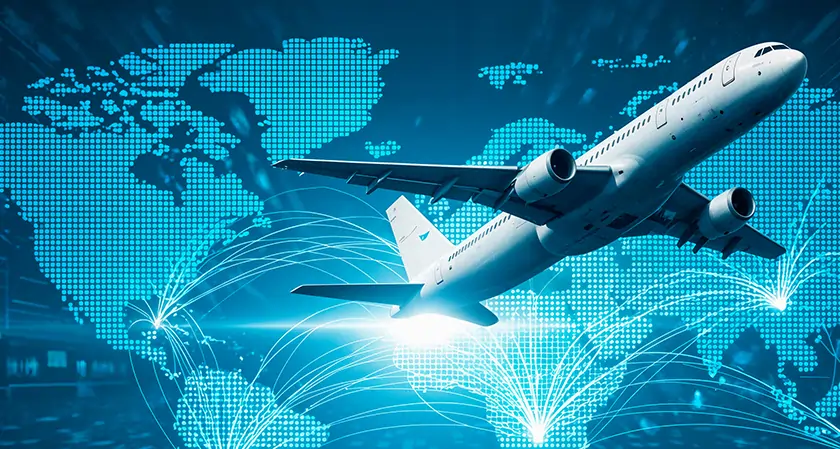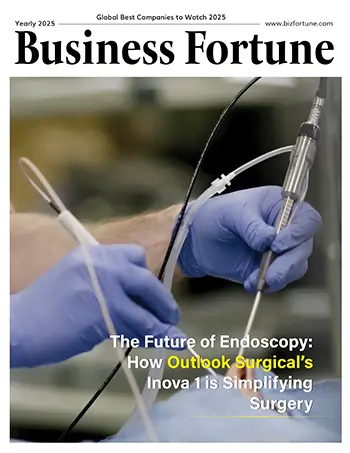Home Industry Automobile Accuracy in the Sky: How Moder...
Accuracy in the Sky: How Modern Technology Guarantees Smarter, Safer, and More Effective Flights
Automobile

Business Fortune
27 August, 2025
Reliable equipment is essential to the safety and effectiveness of every flight in modern aircraft. At every level of operation, sophisticated electronics and precise parts may save pilot effort and increase control accuracy. Numerous advances provide real-time communication with ground support, navigation path guidance, and system monitoring. Clear data and quick modifications in the face of changing circumstances are frequently required by hectic schedules. Reliable performance and strict safety and fuel consumption requirements may be met by using straightforward designs that integrate robust materials and sophisticated computation.
High-Tech Navigation Systems
Even when weather conditions become difficult at high altitude, modern navigation systems can direct airplanes along accurate flight paths. In order to preserve route accuracy over lengthy cruises, satellite-based receivers can determine locations by detecting signals from many circling satellites. During hectic operations, pilots can easily read clear route maps and altitude data shown on cockpit displays in straightforward formats. When satellite signals are momentarily lost over remote areas, integrated inertial sensors can detect movement continually to fill up the gaps. Regular updates can assist in preventing needless diversions that could lengthen flight times and increase fuel consumption, as well as eliminate route deviations. Navigational innovations can facilitate direct routing, which reduces pollutants and speeds up travel.
Technology for Avoiding Collisions
By monitoring the locations of other aircraft in its vicinity, the collision avoidance system may determine when a collision is likely to occur. In order to assess possible conflicts in crowded skies, nations can also communicate by measuring relative height and distances. Pilots can quickly identify cockpit cautions with their distinct symbols and loud notifications, preventing them from being distracted from their primary jobs. Pilots can swiftly modify flight routes to maintain safe separation thanks to these aircraft components' ability to identify possible risks and produce straightforward directions. The risk that might result from blind spots or quick movements in crowded hallways can be decreased by continuous scanning. Proactive modifications that aid in preserving a safe buffer around the aircraft can be supported by automated tracking.
Contemporary Flight Control Systems
Using dependable processors, flight management units may combine navigation, performance, and guiding features into a single operating system. By taking into account weight distribution, altitude constraints, and wind data, systems can determine the best paths to maximize fuel economy at every stage of flight. Pilots can adjust departure or arrival procedures without doing calculations by using cockpit interfaces that can display scheduled legs and enable quick modifications. Crew members may make well-informed judgments on speed adjustments with the use of real-time performance updates, which can predict fuel consumption and arrival timeframes. Pilot effort can be decreased, and consistent procedures that increase safety margins throughout crucial flight phases can be supported by highly automated interfaces. Technology can provide accurate direction, which typically results in more efficient operations and reduced operating expenses.
Effective Channels of Communication
By providing secure digital channels, modern datalink communication enables the cockpit personnel to communicate with ground support and air traffic control without relying exclusively on voice radio. To prevent miscommunications caused by excessive radio traffic, the system may send text-based clearance, weather, and other information to the onboard displays. Crews can receive incoming information more rapidly and carry out orders precisely when time is of the essence with the aid of basic message formatting. When primary channels are interfered with across remote areas, redundant communication methods may rely on satellite and terrestrial networks to stay connected. Clear audio signals from dependable speech systems help minimize misread and replay situations, which could cause replies to be delayed. Better communication can provide better coordination by assisting in the coordination of safety procedures and logistics across all flight stages.
Dependable Sensors for Engine Monitoring
In order to identify abnormalities before they become serious, engine monitoring sensors can easily collect information on the temperature, pressure, and vibration levels inside vital components. In order to monitor performance changes when engines operate under various loads, sophisticated probe arrays can continually sample airflow and combustion conditions. Real-time sensor output analysis by onboard computing systems can identify deviations that deviate from permitted ranges and trigger necessary maintenance crew actions. Engineers may plan ahead and schedule inspections rather than waiting until the last minute by using alerts that can be shown on ground station screens and cockpit panels with clear status LEDs. Integrated diagnostics may even be able to avoid scheduled downtime by capturing past trends that allow for the prediction of future maintenance requirements. By guaranteeing that engines operate within ideal bounds throughout every flight, effective sensor networks may promote safer operations.
In Conclusion, Innovation Is Improving Aviation Efficiency and Safety
Precision and dependability are essential to modern aircraft. Every technical development, from sophisticated navigation systems to reliable communication channels and real-time engine monitoring, aims to lower hazards and increase efficiency. In addition to reducing pilot effort, these integrated technologies improve fuel efficiency, optimize flight routes, and guarantee prompt reactions to unforeseen circumstances. Adopting these advances will continue to be essential as air transport develops in order to create safer skies, more efficient operations, and an improved flying experience for both pilots and passengers.


































